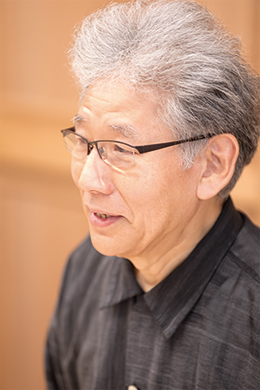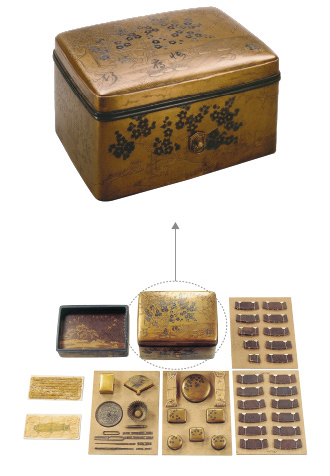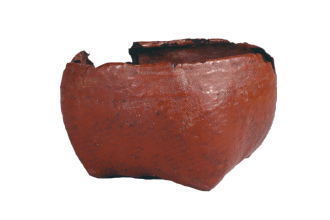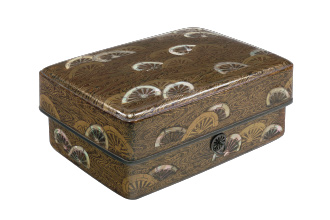niponica is a web magazine that introduces modern Japan to people all over the world.
2019 NO.25
Japan’s Decorative Art of Urushi

Beauty Created From Strength and Delicacy
Black that gives a feeling of light
Beauty with innate contradictions
Top – “Maki-e Cosmetic Box with Plum Blossoms Design" - a large box containing a set of cosmetic implements; the oldest relic of its type from around the 13th century
(Mishima Taisha Shrine. Photograph provided by the shrine.)
Bottom - Various exquisite cosmetic implements contained in the "Maki-e Cosmetic Box with Plum Blossoms Design"
Urushi is a tree sap extracted from the Japanese lacquer tree (toxicodendron vernicifluum). Urushi is a natural coating and adhesive with a long history of use in Japan, stretching back more than 7,000 years.
The culture of urushi lacquering has continued since ancient times, when it was already regarded as displaying a profound sense of beauty and artistic sensibility. Later, the Nara period (8th century) heralded a new phase. maki-e (urushi coating that uses gold or silver filings for decoration) was born - a technique that represents the Japanese art of urushi. In the Heian period (8th-12th centuries) maki-e was developed primarily in Kyoto, which was the capital at the time; and in the Kamakura period (12th-14th centuries) it established its fundamental technique. Many famous pieces were also created from the Muromachi period (14th-16th centuries) onwards, and in the Edo period (17th-19th centuries) maki-e reached its technical peak.
In the late 16th century Portuguese and Spanish missionaries came to Japan and took Japanese maki-e back to their home countries. When people saw shikki they were amazed at its mysterious blackness and the glow of the gold, quite unlike any paint to be found in Europe. In the 18th century it became known as "japan" and was much admired. Despite the unending depth of blackness, there was a sense of translucence in places. Urushi, which combined these two seemingly contradictory elements, fascinated people throughout Europe. Gradually a movement arose to imitate the shikki from Japan using a substitute paint; this came to be known as "japanning."
In fact, urushi can only be harvested in the monsoon climatic zone. Shikki is made in a number of countries outside Japan from East Asia to Southeast Asia, but shikki from Japan boasts an unparalleled beauty. The secret lies in the characteristics of the urushi produced in Japan, which solidifies to a hard finish with a beautiful gloss, and in the attention to detail that the Japanese people pay to their craftsmanship. Urushi, whose properties differ subtly from season to season, is carefully harvested and selected for use, so that the most suitable urushi is used for each process or expressive technique. Durable and beautiful shikki is made using these materials and techniques.
Rantai shikki - a basket woven of thinly cut bamboo and coated with urushi (Korekawa Archaeological Institution. Photoraph provided by the institution.)
Decorative urushi techniques gradually matured up until the Edo period, but then the Meiji period (19th-20th centuries) saw the winds of fortune suddenly change. With the collapse of the shogunate feudal system, artisans lost their patrons and in addition, the opening up of Japan to the West saw an influx of western values that made a distinction between “fine art” and “decorative art.” In Japan, Kogei (Japanese craft) including shikki, had always been "fine art" of itself at the same time; however, at this juncture, Kogei became a subordinate concept of "fine art."
Yet even after this, urushi Kogei continued to survive. The skills exhibited by the urushi artisans who had served the shogunate and the imperial household were protected by "Tokyo National University of Fine Arts" (currently known as "Tokyo University of the Arts"), which was Japan's first national institution for the training of artists; here the skills continue to be refined and are, even now, passed down to us from the highest pinnacle.
Meanwhile craftsmen from local shikki production areas (areas that were formed as a result of industry promoted by daimyo lords from each of the feudal domain in the Edo period) struggled with the change in senses of values and the wave of mechanization but continued to create products that colored lives, so that even today shikki continues to remain a part of Japanese lifestyle.
Writing box with popular design of the time (created using the maki-e technique). A famous 12th century piece " Tebako. Design of wheels half-submerged in stream in maki-e lacquer and mother-of-pearl inlay, " representative of urushi Kōgei of the Heian period (Tokyo National Museum. Photograph provided by TNM Image Archives.)
Coating everything in beauty from normal, everyday items to the finest wares, urushi culture continues to live on, together with its wares and spirit; and in recent years, there has been a reappraisal of Kogei in the meaning that also to refers " fine art."
The Japanese has producing shikki throughout the ages and imbued with their spirit. It has been repaired with urushi if broke and has continued to be used with care for generations. It is amazing how shikki thousands of years old dug up from deep under the ground retains its vivid color and shine.
Urushi has both acid and alkali–resistant properties, making shikki alone remain intact in Japan's acidic soil where most things go rotten.
In spite of such strength, shikki degrades when exposed to ultraviolet rays and will return to nature's soil over the course of several hundred years. As the problem of microplastics becomes apparent these days, in terms of ecological initiatives shikki has the notable quality of being an environmentally-friendly material.
The culture of urushi has been handed down using raw materials from Japan and through the spirit unique to the Japanese people. It is something unique that cannot be imitated by countries elsewhere and is no doubt something that will also be worth carefully protecting and passing on to the future.
Murose Kazumi
In 1976 he completed a major in urushi art from the Graduate School of Fine Arts at Tokyo University of the Arts. As well as presenting works both in Japan and overseas, Murose has also been  involved in the conservation of urushi art and cultural properties. In 1991 he opened the Mejiro Institute of Urushi Research and Restoration. In 2008 Murose was accredited as the holder of Important Intangible Cultural Property (“Living National Treasure”) of “maki-e” In the same year he received the Purple Ribbon Medal of Honor. His books include "Urushi no bunka" (published by Kadokawa; Japanese only,) and "Maki-e Urushi: Murose Kazumi sakuhinshu" (published by Shinchosha; Japanese and English.)
involved in the conservation of urushi art and cultural properties. In 1991 he opened the Mejiro Institute of Urushi Research and Restoration. In 2008 Murose was accredited as the holder of Important Intangible Cultural Property (“Living National Treasure”) of “maki-e” In the same year he received the Purple Ribbon Medal of Honor. His books include "Urushi no bunka" (published by Kadokawa; Japanese only,) and "Maki-e Urushi: Murose Kazumi sakuhinshu" (published by Shinchosha; Japanese and English.)








